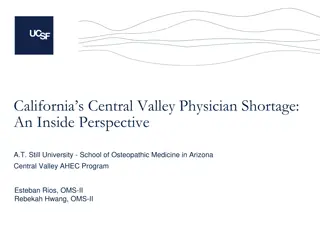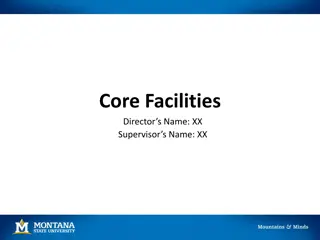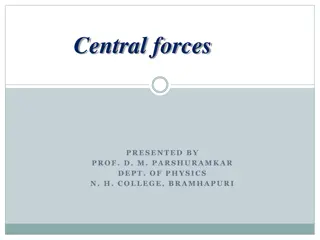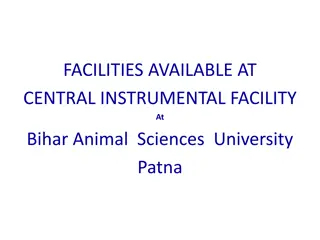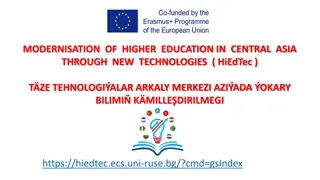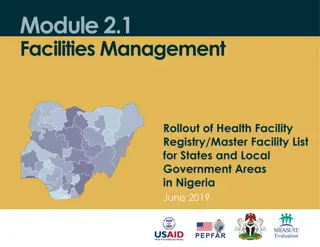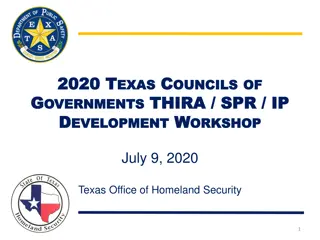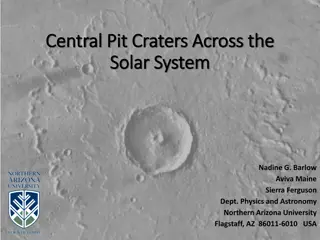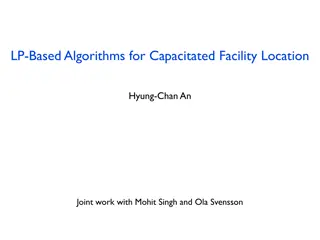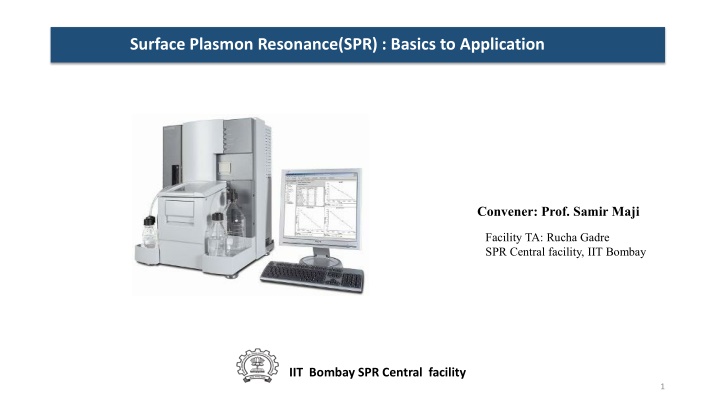
Surface Plasmon Resonance (SPR): Basics to Applications
Learn about Surface Plasmon Resonance (SPR) technology, its principles, and applications in studying biomolecular interactions. Understand how SPR works, its real-time assay capabilities, and its significance in drug development and biotechnological innovations.
Download Presentation

Please find below an Image/Link to download the presentation.
The content on the website is provided AS IS for your information and personal use only. It may not be sold, licensed, or shared on other websites without obtaining consent from the author. If you encounter any issues during the download, it is possible that the publisher has removed the file from their server.
You are allowed to download the files provided on this website for personal or commercial use, subject to the condition that they are used lawfully. All files are the property of their respective owners.
The content on the website is provided AS IS for your information and personal use only. It may not be sold, licensed, or shared on other websites without obtaining consent from the author.
E N D
Presentation Transcript
Surface Plasmon Resonance(SPR) : Basics to Application Convener: Prof. Samir Maji Facility TA: Rucha Gadre SPR Central facility, IIT Bombay IIT Bombay SPR Central facility 1
overview Introduction to SPR Assay Development Applications 2
Introduction to SPR Introduction to SPR Optical Optical technique technique to detect to detect Bimolecular Interactions Bimolecular Interactions Label Label- -free (no tags) detection of binding events free (no tags) detection of binding events Real Real- -time assay (not end time assay (not end- -point) point) Study protein Study protein- -protein, protein etc etc Direct measurement Direct measurement protein, protein- -nucleic acids, protein nucleic acids, protein- -small molecules, Antibody small molecules, Antibody- -protein, protein protein, protein- -lipids, Protein lipids, Protein- -Peptide, protei Peptide, protein n- -drug, drug, Life processes are critically dependent on the formation of bimolecular complexes their communications, networking. Several molecular interactions are taking place in a biological system such as protein-protein, protein-DNA/RNA, protein-small molecules, enzyme-substrate etc, which govern all sort of cellular processes like signal transduction, gene expression, and metabolic pathways. Hence studying bimolecular interactions are central to understanding how biological systems functions and their binding events or Kinetic studies reveal how these activities are regulated. This information eventually advancing our understanding of drug development, elucidates disease mechanisms, and drives biotechnological innovations. By delving into these molecular interactions, we can uncover the intricacies of life at a fundamental level, leading to significant scientific and medical breakthroughs. 3
SPR SPR Overview Overview Principle: Principle: Sensor Chip Interacting Partners A light source Detector 4
Biacore Biacore T200 and accessories T200 and accessories The interaction being studied takes place on the gold- covered side of the sensor chip, opposite from the side where the light is reflected. Sample containing analyte is supplied in a controlled fashion to the sensor surface through an IFC (Integrated Microfluidic Cartridge) system. 5
How does Surface Plasmon Resonance works?? How does Surface Plasmon Resonance works?? 1. A light is incident upon a metal film through a prism and the reflected beam is collected and analyzed. 1 2.The excitation of surface plasmons results in a dark line in the reflected beam, and the angular position of the dark line shifts as a molecule binding event takes place. 2 3.The angular shift vs. time provides a good study of binding kinetics. The reverse process, molecular dissociation, can be studied in a similar way. 3 6
Work Flow Tool For Characterizing And Quantifying Various Biomolecular interactions Binding event Results 7
Assay Development: Steps of BiacoreAssay Development 3 major Steps in an SPR assay 3 major Steps in an SPR assay Immobilization Surface preparation Attachment of ligand (SPR term) to sensor chip surface Sample Injection/Interaction Sample injection Analyte in running buffer flows over ligand immobilized on sensor and binds to it Output = Sensorgram Regeneration Regeneration Removal of bound analyte from the ligand Evaluation Ready for next round of Analyte Binding 8
Immobilization: Surface Immobilization: Surface preparation preparation Attachment of ligand (SPR term) to sensor chip surface Attachment of ligand (SPR term) to sensor chip surface DextranCM5 hydrophilic for coupling Linkerlayer Gold 50 nm for SPR Glass support Stability Direct (Covalent immobilization) Direct (Covalent immobilization) ligand is linked to the surface through a covalent chemical bond. e.g., Amine, Aldehyde, Thiol, etc. Indirect (Capture Method for Immobilization) Indirect (Capture Method for Immobilization) Capture molecule (e.g., streptavidin) immobilized on the surface using covalent chemistry Interaction with a capturing molecule to bind the ligand to the sensor surface The Dextran Matrix Hydrophilic Flexible Resembles a 2% aqueous dextran solution environment Low non-specific binding High binding capacity Where to immobilize Easy to activate and use for covalent coupling Withstands extensive regeneration The Gold Layer: Metal Plasmon and Inert nature 9
Sample Injection Sample Injection Active surface Reference surface Corrected data RU 160 se Respon 140 120 100 80 60 40 20 0 -20 500 s We used 2 flow channels in one experiment-ref and the test. Immobilization is at test reference Analyte is flown from both FC. The data is obtained by test fc-ref fc Also only buffer is also passed as an sample, which is also subtracted. This is called as double referencing. Reference subtraction is important for kinetic and . 10
Regeneration Regeneration Response Remove boundanalytecompletely from the surface good The activity ofthesurface mustremain unaffected bad Efficient regeneration is crucial for high-qualitydata Cycle 1 Cycle 2 Time Selection ofregeneration Contact time and flow Harshness Impact on ligand activity Reproducibility Baseline Stability 11
SPR SPR Applications Applications Types of Assays Binding (Yes/No) Specificity Kinetics (Strength of Binding; ka, kd and KD) Concentration Example :Drug Discovery Wide Range of Biomolecular Interactions Proteins Nucleic Acids Lipids and Membrane-Associated molecules Carbohydrates LMW compounds (< 200 Da) Whole Cells Viruses/Bacteria 13
Conclusions Conclusions It measures Refractive index changes at sensor surface Label-free, Direct, Real time measurement of bimolecular interaction Direct Method vs Capture Method of Immobilization 3 Major steps: Immobilization, Sample Injection/Interaction, Regeneration Double Referencing important Applications: Binding, Kinetics, Concentration, etc Sensorgram shape determines kinetics of binding- KD=Kd/Ka RU 16 14 12 10 8 Response 6 4 2 0 -2 -4 -40 10 60 110 160 s Time 14


